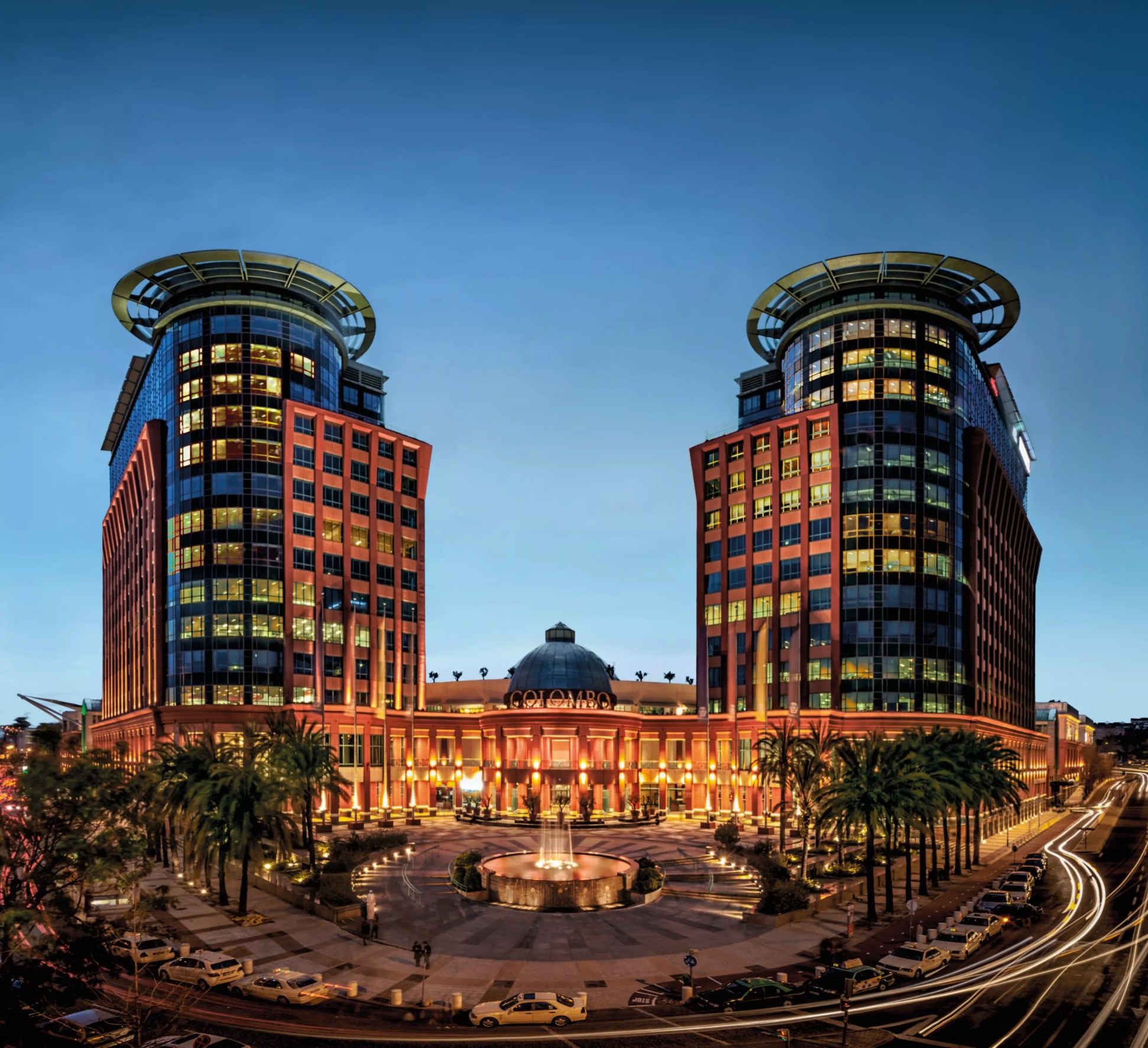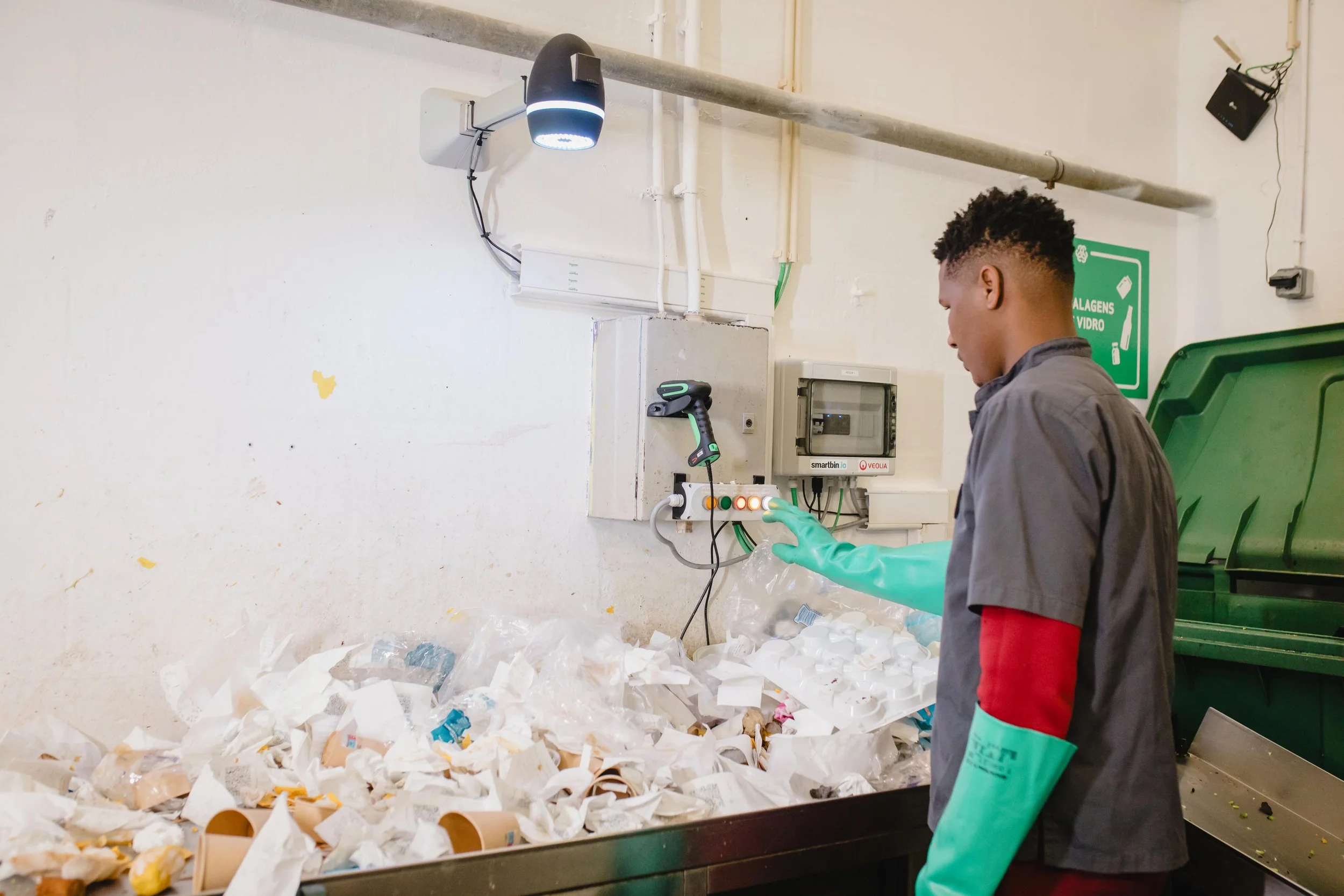AI-Driven Waste Management In Partnership with Veolia Portugal
Over the past year, Smartbin.io’s engineering team has been fully immersed in building an end-to-end smart waste management platform—complete with both software and custom hardware—to tackle contamination in busy food courts. Today, we’re proud to see this technology deployed in partnership with Sociedade Ponto Verde’s Re_source 3.0 program and Veolia Portugal through the “Reciclar o Food Court” pilot at Centro Colombo. By combining QR-code tracking, AI computer vision analysis, and cloud-based analytics, our solution delivers real-time insights that empower each restaurant to optimize recycling with unprecedented precision.
The Challenge: Tracing, Sorting, and Reducing Contamination
In a bustling mall environment, dozens of restaurants generate unsorted waste every hour. Without clear traceability, it’s impossible to know which tray of leftovers or bag of packaging came from which establishment. This lack of visibility drives high contamination rates—when recyclable materials slip into general waste, disposal costs rise and recycling targets fall short. Manual bag inspections in a central sorting room are slow, inconsistent, and can’t provide timely feedback to staff. Smartbin.io recognized two core requirements:
Unambiguous source identification for every bag of waste (restaurant ID + timestamp).
Automated detection of recyclables vs. contaminants as soon as a bag arrives in the sorting area.
Our Software-First Approach
At the heart of Smartbin.io’s platform is a microservice-based architecture running on edge devices and cloud servers. While our software is hardware-agnostic—able to integrate with a variety of cameras, scales, and scanners—we also designed custom sensing units and labeling stations to ensure reliable performance in high-traffic environments. This flexibility means that you can reuse existing equipment or adopt our purpose-built hardware for optimal accuracy.
How It Works: From Doorstep to Dashboard
1. QR Codes and Bag Identification
Each restaurant is assigned a unique digital identifier. When waste collection begins:
A janitor scans an NFC tag placed near the back door using a handheld device.
Our system instantly prints a durable QR-code label that encodes the restaurant’s ID, collection time, and a unique bag number.
That label is affixed to the sealed bag, guaranteeing full traceability throughout the sorting pipeline.
2. AI and Computer Vision Sorting
In the sorting room, each QR-tagged bag is placed on our scale-and-camera station. A high-resolution camera captures images of the sealed bag from multiple angles. Using computer vision models deployed on an edge AI accelerator or cloud GPU, Smartbin.io’s software:
Classifies material types (plastic, paper, glass, metal, organic) inside each bag, even when items are jumbled together.
Computes a contamination score in seconds—calculating the percentage of recyclables mixed into general waste.
Streams images and weight data to the cloud for deeper analysis and historical trend tracking.
3. Guided Interactive Sorting
Once contaminants are flagged, on-screen prompts guide the sorting-team member to separate out items. Each time a distinct material (e.g., plastic bottles, cardboard) is removed:
The scale records weight deltas.
The camera verifies whether the removed items match the expected category.
Every step is logged—images, weights, timestamps—creating a rich, auditable record for each bag.
4. Cloud Analytics and Actionable Reports
Our cloud-based analytics engine aggregates this data across all collection shifts and restaurants. Each restaurant manager can log into a secure dashboard to view:
Daily contamination rates, broken down by material type (e.g., “Wednesday: 15% plastic mixed into general waste”).
Top error patterns, such as “20% of mis-sorted items were food-soiled paper.”
Data-driven recommendations, like “Place dedicated paper bins near prep stations.”
By sharing these insights daily, we enable staff to adjust behaviors in real time—driving continuous improvement and steadily increasing recycling performance.
Early Results and Impact
In the first month of the Centro Colombo pilot:
Contamination dropped across participating restaurants, as teams acted on immediate AI-generated alerts.
Sorting throughput improved, since the AI camera pre-flags clear contaminants, reducing manual guesswork.
Several restaurants reported streamlined kitchen workflows once they saw which materials were most frequently mis-sorted.
Centro Colombo’s baseline recycling rate of 62% (in 2023) is already trending upward, and we anticipate even greater gains as the pilot runs through September 2025. By continuously retraining our computer vision models on the accumulating dataset, we’re moving toward fully automated contamination detection—eventually enabling a zero-touch sorting process.
Looking Ahead
Smartbin.io’s mission is to deliver a turnkey smart waste management solution that scales across cities, malls, and corporate campuses. Our combination of QR-code tracking, AI-driven camera analysis, and cloud analytics—alongside our custom hardware—ensures you can reduce disposal fees, hit ESG targets, and minimize landfill impact. If you’re ready to see how AI and computer vision can transform your facility’s recycling program, request a demo or reach out at smartbin.io. Let’s build a cleaner, more circular future together.


